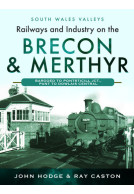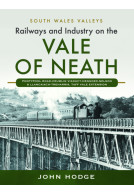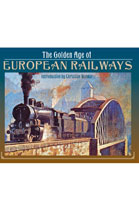Carmarthen to Fishguard Harbour (Hardback)
Imprint: Pen & Sword Transport
Series: West Wales Railways
Pages: 216
Illustrations: 54 colour & 366 black and white illustrations & maps
ISBN: 9781526795786
Published: 11th November 2021
(click here for international delivery rates)
Order within the next 1 hour, 5 minutes to get your order processed the next working day!
Need a currency converter? Check XE.com for live rates
This volume covers the important main line section of line between Carmarthen and Fishguard Harbour, the terminus station opening in 1906 and replacing New Milford (later Neyland) as the previous main line terminus. In 1909 Cunard passenger liners between New York and Liverpool began calling at Fishguard and this book contains a fascinating account of this working lasting 3-4 years which saw fast connecting trains running to Paddington and the Continent via Dover. There were also important branches coming off this line at Whitland (for Pembroke Dock) and also to Cardigan, though the latter was closed in the Beeching cuts of 1964. The book affords a detailed look at Whitland where the rail service has been completely transformed since the end of steam. We see the Milk services that ran from Whitland (as well as Carmarthen) and the Fish services from Milford Haven, as well as the Oil Trains which will feature in a later volume.
Book review as featured in
ICE Panel for Historical Engineering Works Newsletter
INEXPLICABLY, the railways of West Wales have, in the past, received scant attention from authors, but John Hodge has worked hard to rectify that. This lavishly illustrated book brings the story right up to the present day.
Great Western Society - The Great Western Echo, Winter 2023
This book is a delight for those interested in Welsh railways and is strongly recommended.
Rail Advert
4.9 out of 5
Read the Full Review Here
This book continues the author’s excellent series of books on West Wales Railways, following on from his volume on the line from Llanelly West to Carmarthen, which he has since followed up with volumes on the Whitland to Pembroke Dock line and the Milford Haven and Neyland branches.
Rail Advent
Yet another impressive volume from John Hodge.
Paul Weeden
The brief review of the development of Fishguard Harbour and the variety of traffic emanating from this area of West Wales sets the scene for the development of this line.
The subsequent details of each station and halt along the line give a summary of the pertinent events during their life. The type of goods traffic is identified together with notes of any private sidings that existed. This being accompanied with numerous photographs, mainly steam era but with some modern image as the line is still very much in use to this day.
The Appendix gives a timetable for train services at Whitland in the summer of 1957.
Again the whole volume is profusely illustrated with good quality illustrations, both black and white and colour, covering all periods from inception to current day from numerous sources.
Another superlative volume that gives hours of enjoyment, can’t wait for the next.
"This is a delight for those interested in Welsh railways and further volumes in this series covering the other lines in Pembrokeshire are planned."
Railway and Canal Historical Society
"This is another excellent book by John Hodge and is highly commended."
West Somerset Railway Association
I can strongly recommend this excellent photographic history of this line.
The Broad Gauge Society
Featured by
6024 Preservation Society
The author rightly says this book shows “what a place of interest and activity it used to be”, this is a book with much to fascinate.
Welsh Railways Research Circle Newsletter No.168, Winter 2021
This excellent volume provides a photographic historical journey along the line. It achieves the correct balance of narrative and photograps throughout the history of the line
James Simmonds
I can wholeheartedly recommend this book
About John Hodge
The late John Hodge was a former railwayman, who started his working life on the Western Region in South Wales in 1961, later transferring to London Paddington and British Railways Board. He was brought up in Barry, a port town west of Cardiff, which has strong railway connections, once being an important port for coal traffic and later being famous for Woodham Brothers scrap yard, and which held over 200 locomotives that are now mostly preserved on heritage lines. John was a lifelong railway enthusiast and historian, with many railway histories published.






















